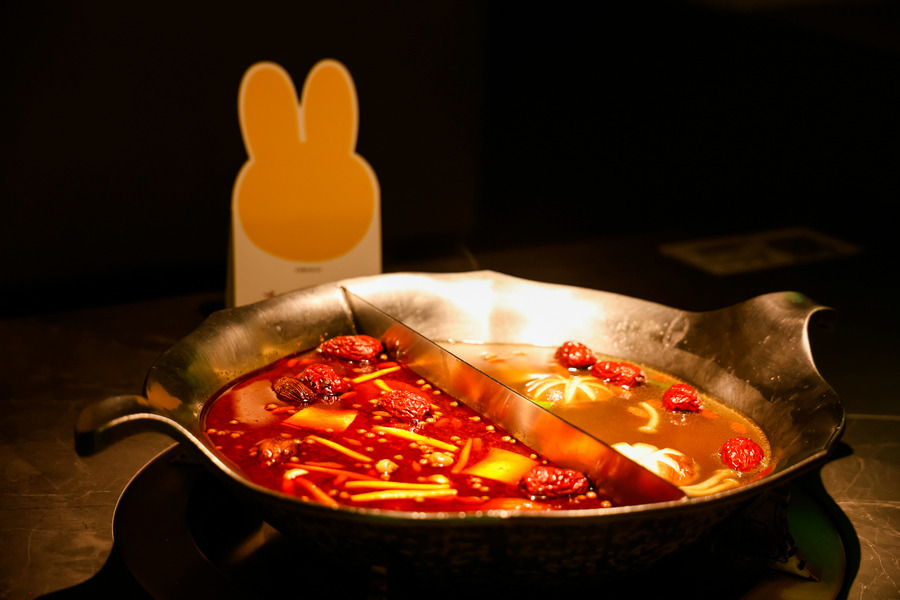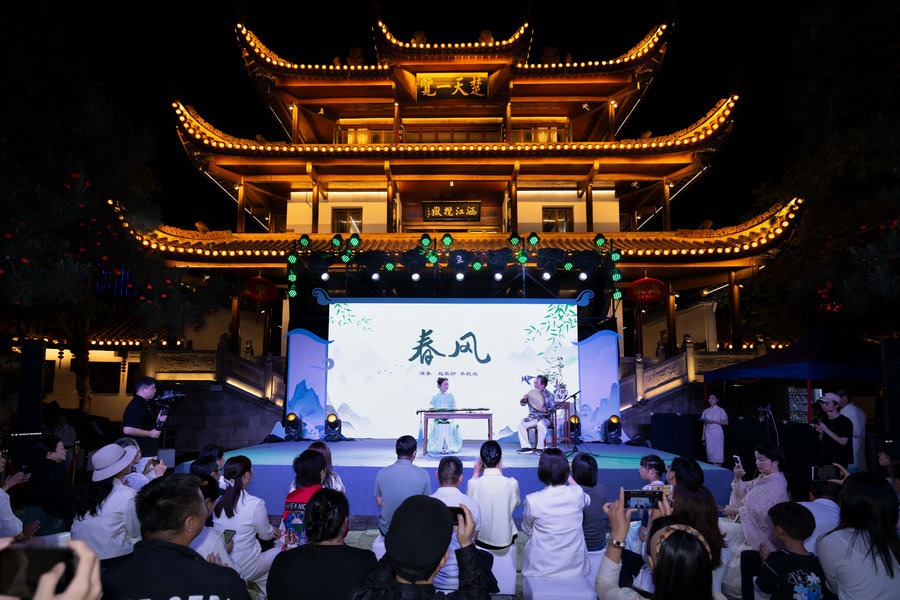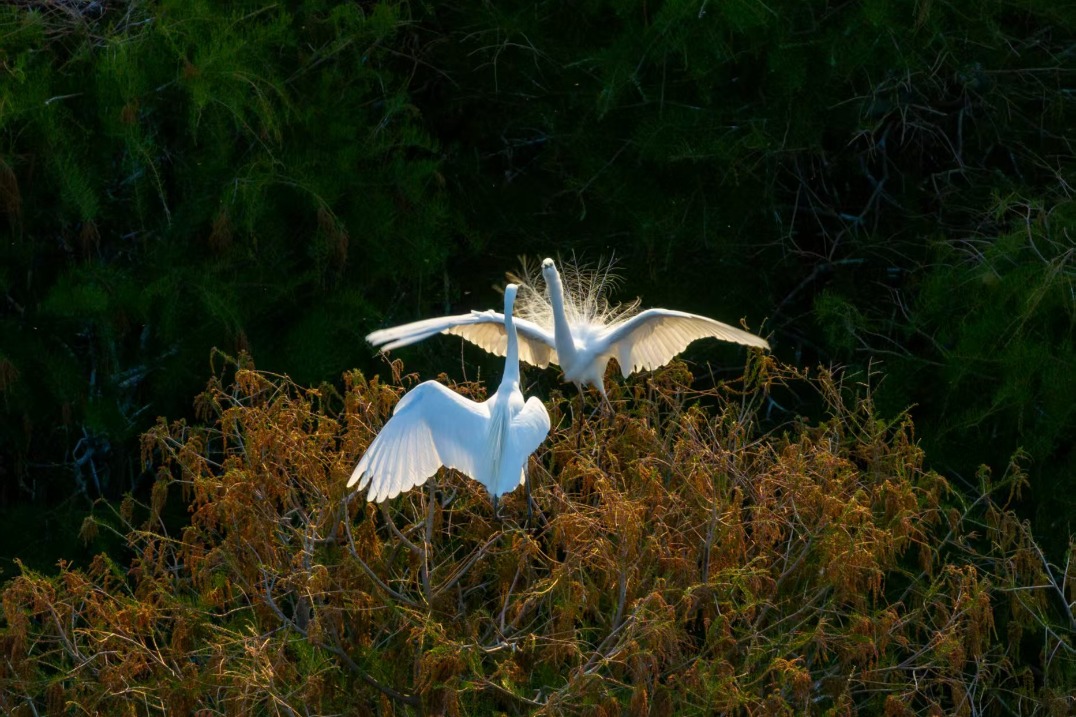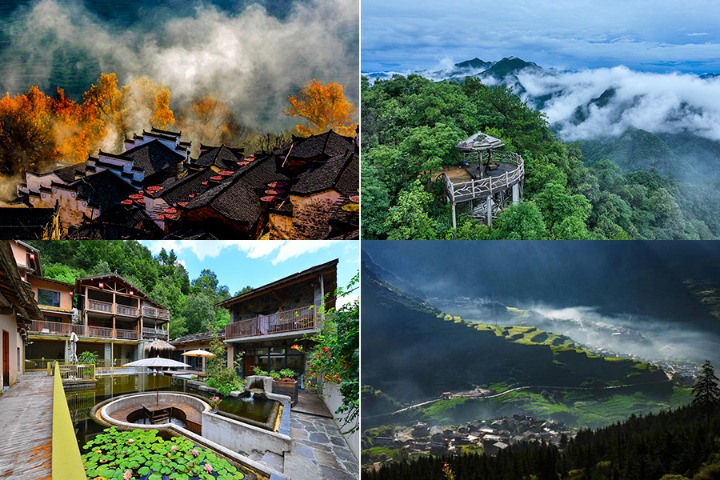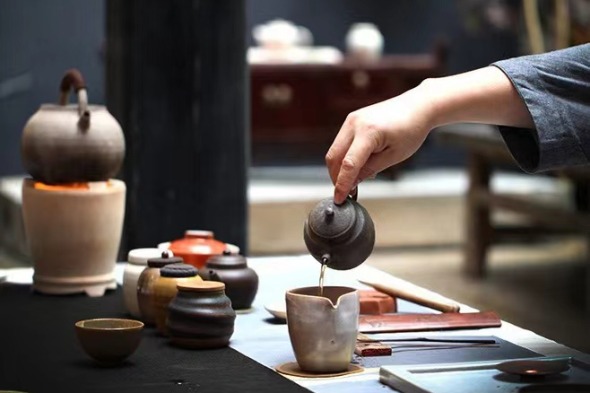Where stars dance and the air sings
From the stargazing wonder of the Southern Lights to the crisp breath of Cape Grim, the Australian island state of Tasmania stirs Chinese hearts with purity, beauty and memory

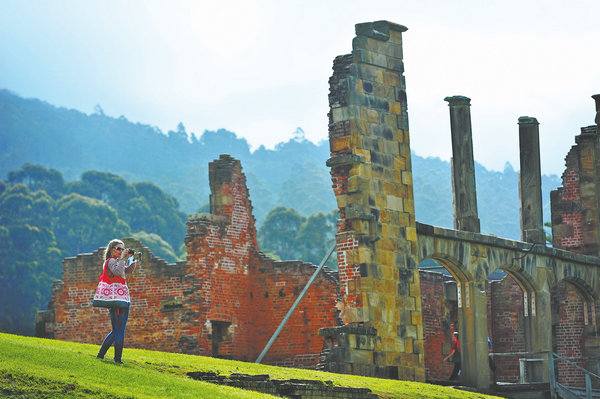
One of the first things tourists notice when they visit Australia's southern island state of Tasmania is just how clear the air there is.
According to the Commonwealth Scientific and Industrial Research Organization, Australia's science agency, some of the cleanest air in the world can be found at Cape Grim in the far northwest of the state. The air is so pure that some enterprising companies are bottling and exporting it so that people around the world can breathe the fresh Tasmanian air.
The clear night sky and bright stars are nothing less than "magical", says Wayne Wong, who first visited Tasmania a few years ago. "When you live in a city, you cannot appreciate the air you breathe or just how beautiful the sky, especially at night, can be." But fresh, clean air is just one of the reasons why tourists, whether from the mainland of Australia or from overseas, visit Tasmania.
Fly-drive holidays are popular among young Chinese tourists visiting the state for the first time, stopping at iconic destinations such as the Cradle Mountain-Lake St Clair National Park, one of Australia's greatest natural treasures. The historic Port Arthur penal colony, the Gordon River with its Huon pine forests, and what remains of the Sarah Island penal colony — built for repeat offenders — are also popular destinations.
Tasmania may be the smallest state in Australia, but when it comes to sheer natural beauty, there are few places on the mainland that match it.
The Tasmanian Wilderness World Heritage Area, declared in 1982, is spread across more than 1.5 million hectares, or around one-fifth of the state's land mass. Most UNESCO World Heritage sites meet only one or two of the 10 criteria for that status; the Tasmanian Wilderness World Heritage Area meets seven. Only one other place on Earth — China's Mount Taishan — meets that many criteria.
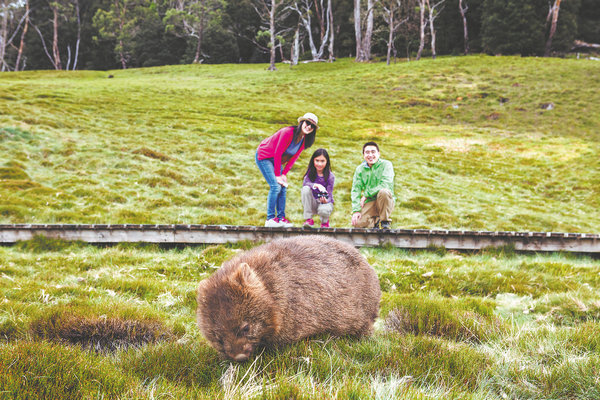
Tourism contributed A$4.55 billion ($2.94 billion) to the state's economy last year and supports about 50,800 jobs, according to Tourism Tasmania, the state tourism promotion agency.
Tasmania attracts more tourists a year than its population, which stands at just under 600,000.
Before the outbreak of the pandemic, China was Tasmania's biggest tourism market. The number of Chinese tourists has not yet recovered to pre-pandemic levels, but Tasmanian tourist operators are starting to see a rebound.
"China is a highly valued tourism market for Tasmania," says Sarah Clark, CEO of Tourism Tasmania. "Chinese visitors are drawn to the state for many reasons. Some come for the natural beauty of the state and its wildlife; others for the food, wine, seafood and agritourism."
The agency is working closely with travel distribution partners in China to support increased visitation, Clark says. It also has a team in China "working with us to support the return of Chinese visitors", she says.
The extension to Hobart Airport's main runway, which is nearing completion, is expected to give tourism a boost because it will allow bigger aircraft to land.
"This will allow us to secure a direct flight from an Asian hub in the near future," Clark says. Last year, Tasmania welcomed 24,000 visitors from the Chinese mainland, a more than 50 percent year-on-year increase. "The overall recovery rate of Chinese visitors to Tasmania post-COVID-19 is currently 56 percent," Clark says.
In 2019, the Chinese mainland was Tasmania's top international source market, sending 42,700 visitors. Today, it is Tasmania's third-largest international source market after the United States and the United Kingdom.
Tourism Tasmania has begun a campaign to boost winter tourism and "noctourism", or nighttime tourism, which has become a growing trend around the world.
Sydney may have its "Vivid Sydney" light show in June, but Tasmania boasts one of the world's most spectacular light shows, the Aurora Australis, also known as the Southern Lights, which can be seen through most of the year.
"We are seeing an increase in visitors coming specifically for the night sky, but also for our nocturnal wildlife tours and dark-sky experiences," Clark says. "Tourists are coming for the natural beauty during the day but staying for the nighttime spectacles like the Aurora. It is a major driver for visitors, particularly from international markets."
First-time visitors to the island are captivated by the night sky with its glittering constellations, where the stars shine like diamonds.
Earlier this year, locals and tourists alike were enthralled by the Southern Lights.
This phenomenon is like the Northern Lights, which can be seen dancing across the Arctic region in the Northern Hemisphere.
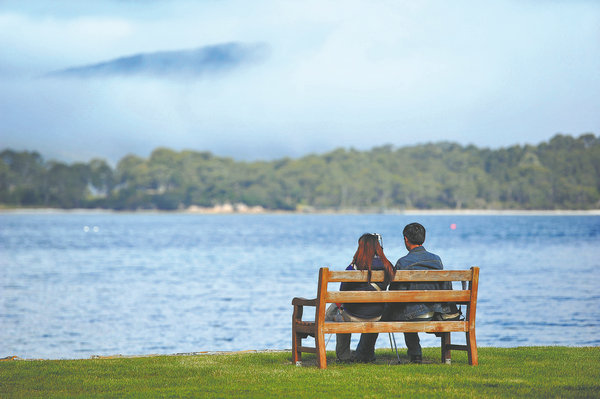
This year, the Southern Lights were brighter and more pronounced with the light show being seen from many parts of the Australian mainland. However, it was in Tasmania that people had the best view, as the state boasts crystal clear skies.
So, what brings Chinese tourists to the Australian island state?
"Pure and pristine nature, lavender (teddy) bears, gourmet seafood, the Port Arthur historic site … and outdoor adventure activities have come to be regarded as unique Tasmanian experiences by many Chinese," wrote Yue Ma, an academic at the University of Tasmania, in a recent paper.
"The boom of Chinese inbound tourism has spurred the state's economic growth, enriched cultural exchanges, and stimulated regional development."
Historical ties
Tasmania may be a relatively new destination for Chinese tourists, but the state's relationship with China goes back to the 1800s. Their journey and hardships are celebrated in the exhibition called Home: Here and Now, which is touring the state. The exhibition showcases a chapter of Tasmania's history that is often overshadowed by the state's grim past as a penal colony.
"Chinese settlement in Tasmania began in the 1830s with the arrival of nine Chinese carpenters," says an article published in the Australian Geographic magazine in March. "During the next two centuries, they were followed by miners, market gardeners, restaurateurs, students, and entrepreneurs. Although some Chinese came to Australia in search of gold, others were lured by tin to Tasmania."
Today, people from across China visit as tourists, with many reconnecting to their past.

















